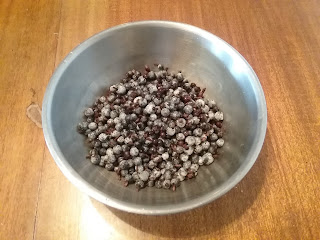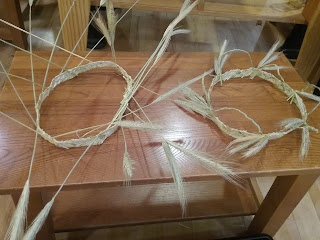The Challenge: Saucy: Make a sauce, gravy or dressing.
The Date/Year and Region: Philadelphia, 1844 (originally published in London in 1806)
How Did You Make It: Half-scale. I warmed 1 cup of milk, adding to it half a white onion, a stick celery, two dashes of salt, a dozen whole white peppercorns, and a generous handful of parsley. While this was heating, I melted 2 Tbsp of butter, and stirred into the butter a little flour (~1-2 Tbsp) until it was pasty. I then strained the milk, and poured it into butter-flour mixture. I continued heating the combined mixture over med-low heat, and within a few minutes it had thickened considerably (it was still able to be poured, but awfully close to a solid).
Time to Complete: I need to start timing these better. This went quickly, and felt like a 10-minute task, though it was probably closer to 20 minutes.
Total Cost: All items on hand.
How Successful Was It?: Very tasty, and I didn't turn it brown this time by over-cooking the roux. I'm a little concerned that the sauce consistency was too thick, but it still served up just fine. The dominant flavor of the sauce was onion, but I didn't find it overwhelming or unpleasant--it went very well with the chicken I served it over, and added a fun savory flavor to the mashed potatoes as well. The half-batch was a little odd to work with, even in my smallest pans, so I think it would be easier to make this at a full batch or even a double batch.
Best of all, I now have another vegetarian period receipt (albeit containing milk and butter), and a savory one to boot. I always seem to need more savory options. That being said, white sauces seems to mostly be served over chicken and other white meats. Will need to continue investigating.
How Accurate Is It?: Not glaringly anachronistic that I can tell. It is supposed to be "thick and smooth", which it was, but I wonder if mine ended up too thick (it was nearly as substantial as the mashed potatoes I served it over). As for equipment, I used an electric stove.
 |
| I swear this went from 'milk' to 'frosting' viscosity in about 30 seconds. |
 |
| Tasty on chicken and potatoes alike. |
















